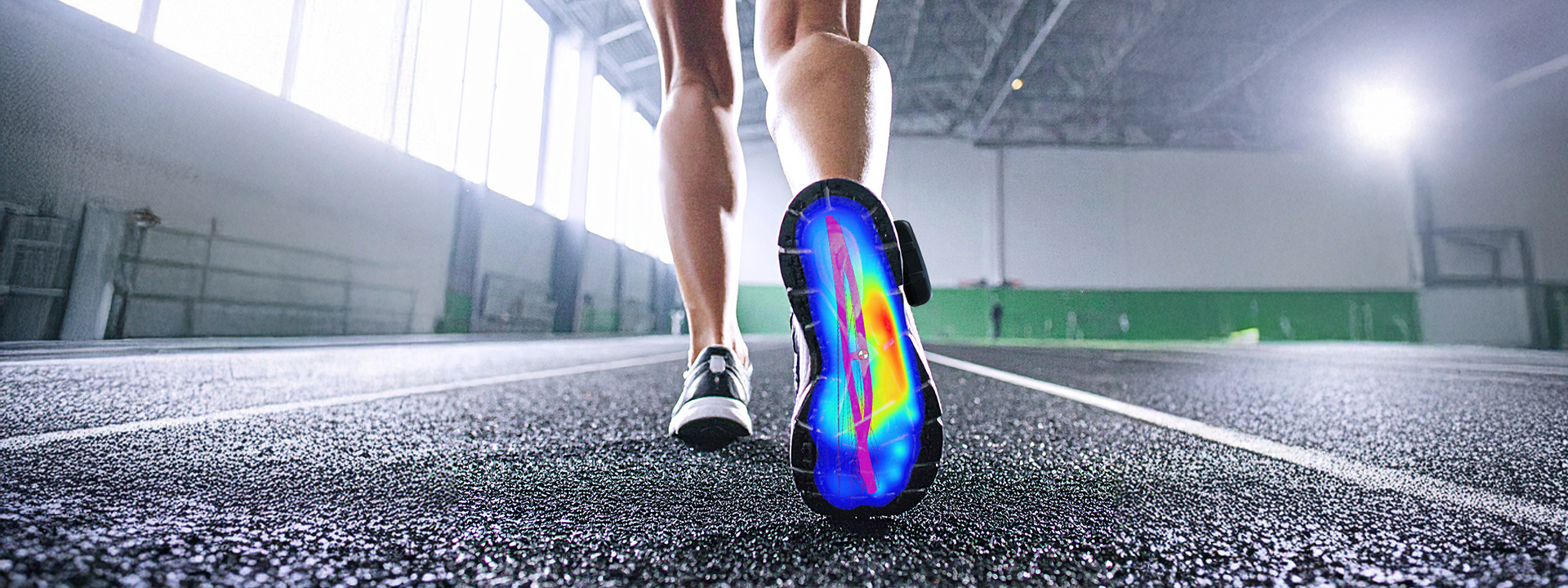
Advancing Running Shoe Performance Through Biomechanical Insight & Pressure Mapping
Sport footwear design is an intricate, step-by-step process that represents a fundamental landmark in the sports performance industry. In fact, the architectural and mechanical characteristics of a running shoe play a key role in the overall performance outcome in disciplines where locomotion is an essential prerequisite.
Medium- and long-distance running are among the most popular forms of physical activity, and injuries to the lower extremities are often linked to inappropriate footwear choices. With plantar pressure mapping insole technology, the process of running shoe design is enhanced through unmatched information on foot/shoe and shoe/ground interactions. All the necessary biomechanical requirements of a running shoe can be evaluated quickly and objectively, thus dramatically decreasing the time needed to control and validate the efficacy of a given design and material.
Biomechanical Characteristics of Running Shoes
An athlete’s performance depends greatly on their footwear. The drive for better results shapes both training methods and equipment innovation, with shoe manufacturers relying on science and experience to develop new products.
Running shoes are classified into cushion, stability, and motion control types to meet the biomechanical demands of various foot shapes—specifically, high, neutral, and low arches. Cushion shoes are tailored for those with high arches, featuring a curved last for cavus feet and softer, more flexible midsoles to enhance shock absorption. On the other hand, motion control models feature firmer, bulkier midsoles that extend under the medial arch; they typically use dual-density materials and have straight lasts suited for pronated feet. Stability shoes offer a compromise between the two, constructed with semi-curved lasts for individuals with neutral foot types.
Given that numerous factors can contribute to injury—such as inadequate conditioning, prior injuries, poor neuromotor coordination, or improper lacing techniques—a better way to assess sneaker performance is to examine both kinetics and kinematics. This helps determine whether each shoe type functions as intended—for example, whether motion-control shoes effectively restrict movement and whether cushioned trainers efficiently reduce impact.
How Can Plantar Pressure Mapping Technology Help?
A specialized method for assessing the kinetic aspects of human locomotion uses sensors to monitor pressure distribution during ground contact, rather than relying solely on net loading profiles from force platforms. Since force is distributed across the contact area rather than concentrated at a single application point (such as the center of force), it can be effectively measured using an array of small force sensors (e.g., each with an area of 5 mm²). These sensors identify zones of elevated pressure and generate a detailed map of load distribution over the contact surface. The aggregate of these distributed forces should correspond to the magnitude of the normal force recorded by the force platform.
The availability of modern transducers, rapid data collection, and efficient data processing, such as in XSENSOR’s Intelligent Insoles, has made pressure distribution tools more accessible for out-of-the-lab applications. Initially developed for basic research on foot mechanics during movement, such technology is now commonly used in sports biomechanics to analyze foot loading, investigate overuse injuries, and advance athletic footwear research for injury prevention and performance improvement.
To delve into the topic of plantar pressure mapping applications in the process of running shoe design, watch our webinar, “Data-Driven Footwear Design (Part 2): Advancing Running Shoe Development with Plantar Pressure Mapping.”
